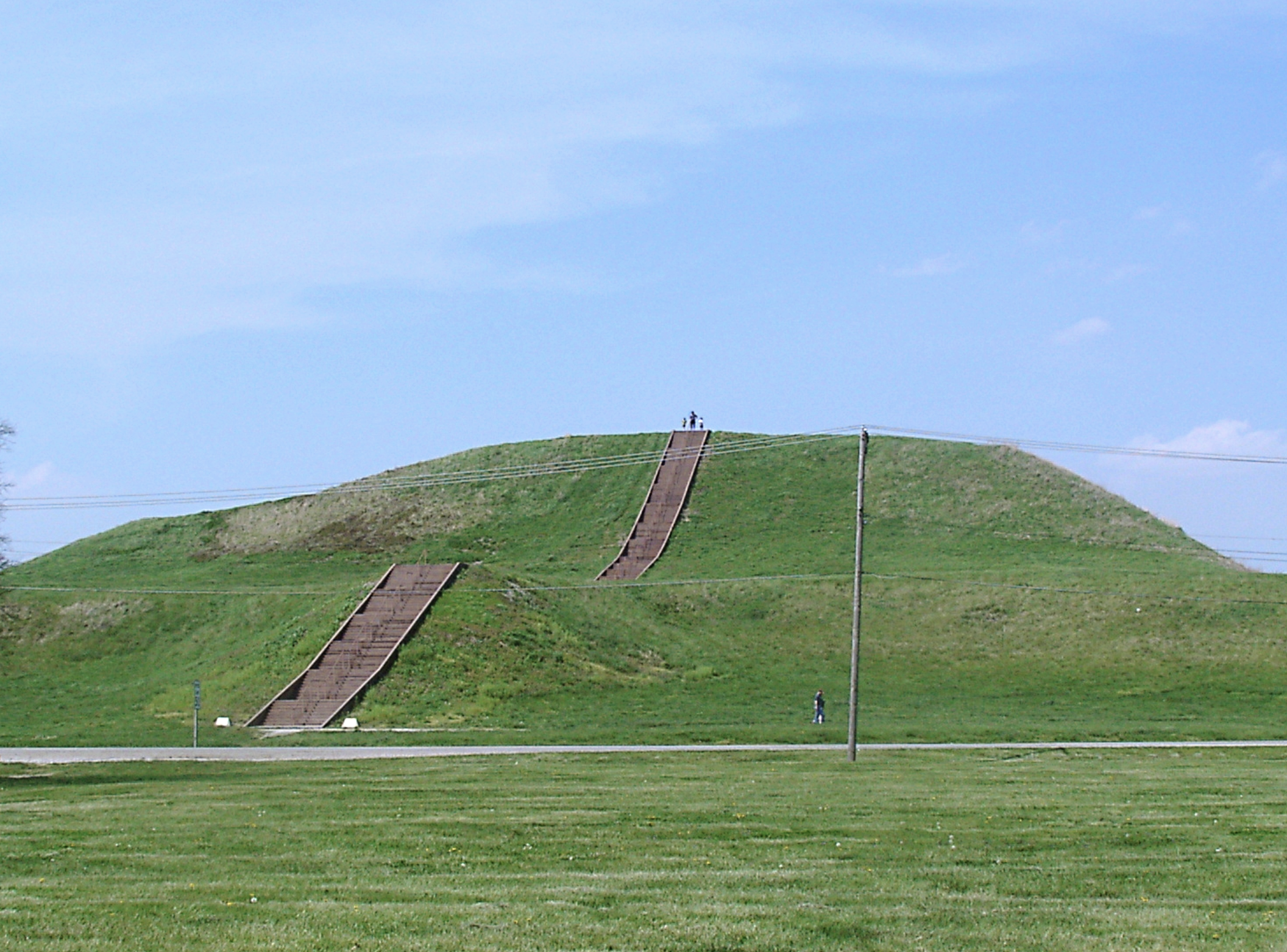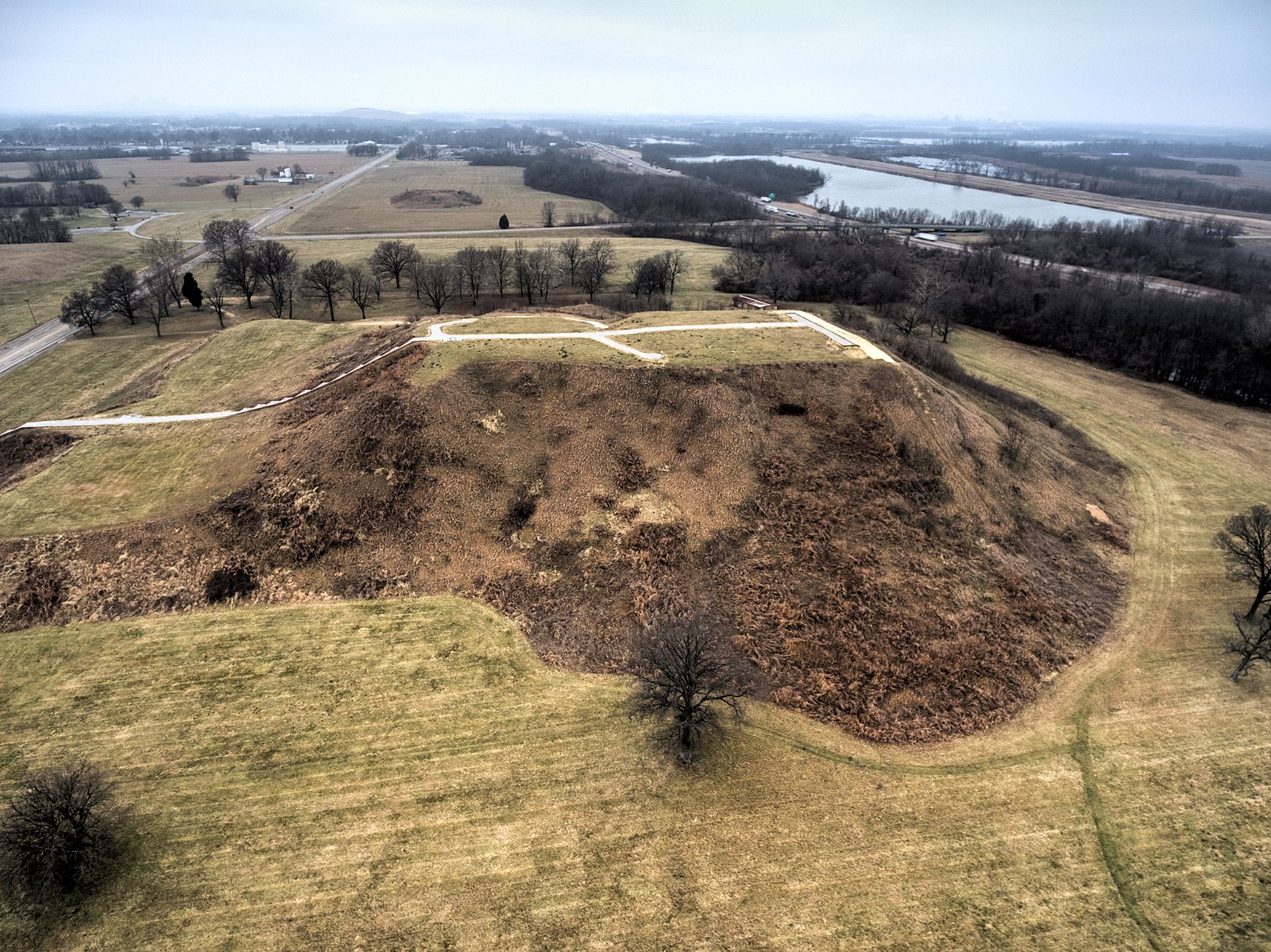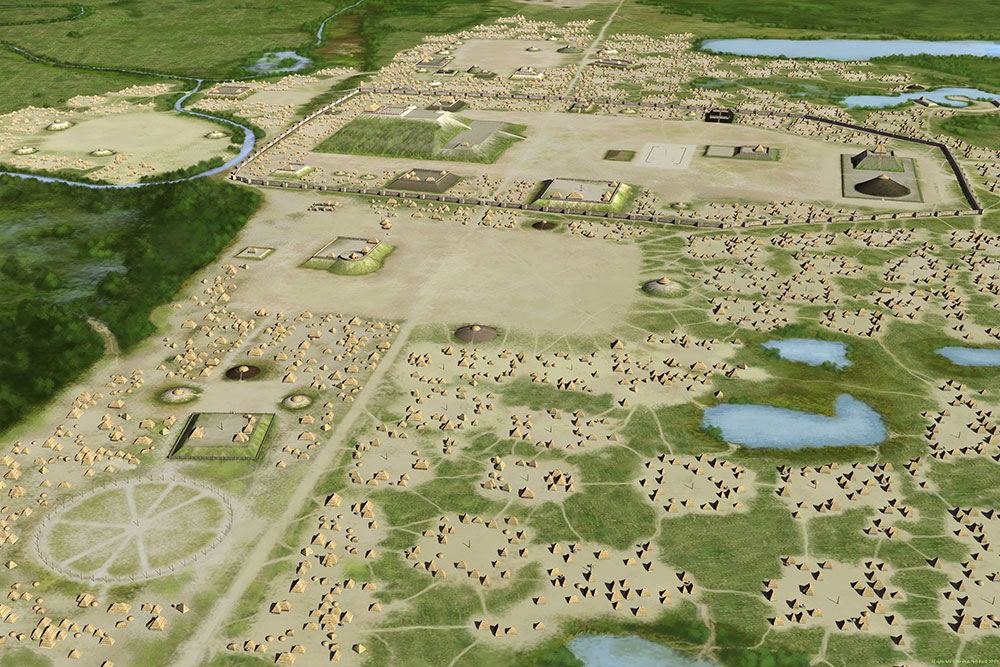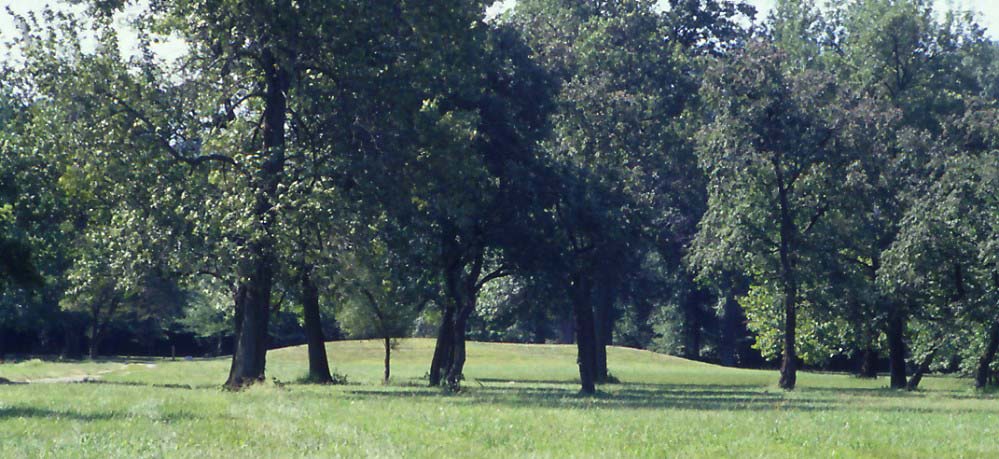The Cahokia Mounds State Historic Site




Annotation
The Cahokia Mounds State Historic Site is an archaeological site of a pre-Columbian Native American city located in southwestern Illinois, near St. Louis, Missouri. The original name is unknown, and the site is named for the Cahokia tribe, a historic people that were living in the region in the 17th century when Europeans first arrived. Cahokia was the largest and most influential settlement of the Mississippian culture. First settled around 600 CE, during the Late Woodland period, and over one thousand people lived there before the 11th century. At its peak, during the 13th and 14th centuries, there may have been as many as 40,000 people living in the city, and more right outside. Continued research has increased the estimated population of Cahokia, which may have been larger than contemporaneous London, and the largest city in what would become the United States until Philadelphia in the 1780s. Influence of the culture seen throughout the regions along other settlements founded on waterways, demonstrating the trade links and strategic position of Cahokia.
The settlement of the large population and the intensive process of moundbuilding point to a sophisticated society. Moundbuilding began in the 9th century CE, there are 80 surviving manmade mounds, but the original city was much larger and had at least 120 earthen mounds. A large mound now called Monks Mound was the focal point of the city and the largest structure. Other mounds, such as Mound 72, were used for burials. Over 250 bodies have been excavated at Mound 72, and scholars believe the remains point to sacrifice and ritualistic execution, along with mass burials. This find furthers both questions and answers surrounding religious practices of the Mississippian culture. However, the mounds and the ceremonial plazas centered around them points to the religious function of the mounds and also the importance of the Cahokia as a religious center.
Cahokia was abandoned around 1350. Political and economic issues were likely the reason, but invasion or environmental factors may also have been at play. The settlement had issues with the food supply and also with waste removal for such a large population. Immigration likely helped keep the population steady, as death rates would have otherwise caused the city to be abandoned earlier.
Cahokia is significant as evidence of the complexity of native peoples in the Americas, with proof of large archaeological structures and urban environments that rival European counterparts. Further, mounds were an important part of numerous native cultures in the Americas for centuries, and the surviving sites at Cahokia further exemplify the religious and cultural significance of mound sites in ancient and early America.
Credits
"Monks Mound," Wikimedia Commons, 2007, https://en.wikipedia.org/wiki/Cahokia#/media/File:Monks_Mound_in_July.JPG.